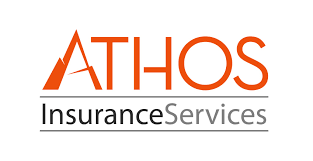On the surface, split-dollar life insurance makes sense. Investigating the legal and tax implications of such a plan reveals the inherent complexities. In this post, I’ll go over the fundamentals of split-dollar life insurance taxation in accounting before discussing two common methods that employees may come across when reviewing company benefits.
What is Split-Dollar Life Insurance
A contract between two or more parties to split ownership and benefits of a permanent life insurance policy with a cash value component is known as split-dollar life insurance.
Companies most commonly use split-dollar contracts to mitigate the financial impact of losing a key executive and/or as an executive benefit, such as a Supplemental Executive Retirement Plan (“SERP”).
How Does a Split-Dollar Life Insurance Plan Work?
Split-dollar life insurance is a contract in which the premium payments and death benefits of a cash-valued permanent insurance policy are split, typically between an employee and their employer. Split-dollar life insurance is a type of company-owned life insurance that benefits both the company and its employees.
Every split-dollar policy requires two or more parties to participate and share the costs and benefits of a cash-value life insurance policy. Split-dollar contracts, on the other hand, can be customized and differ in the following ways:
- Who pays the insurance premiums?
- Which political party controls the policy?
- How the death benefit and cash value are split.
- Which party names the recipients?
- When and under what conditions does the agreement expire?
All of these details (along with others) should be included in the contract that establishes the split-dollar policy arrangement.
When You Have Control Over the Policy
When you own the life insurance policy but your employer pays the premiums, the system is known as a “collateral assignment” under the loan regime.
The term “collateral assignment” refers to the fact that the policy is in your name, but your employer receives some of its benefits. The employer can then lend you money to make premium payments without having to worry about not being paid back — the signed-over portion serves as collateral for the loan. If you die or leave the company, the benefits you signed over to your employer will take effect, ensuring that the company is repaid or the loan is forgiven.
The IRS term for how these agreements are taxed is “loan regime.” Because your employer is lending you money, you must pay interest on the amount borrowed. Otherwise, it would simply be a tax-free benefit. The amount of tax you owe is determined by the interest rate charged by your employer.
When your Employer is the Policy Holder
When your employer owns the policy but you receive the benefits, this is referred to as an endorsement agreement under the economic benefit regime. An “endorsement agreement” means that your employer retains ownership of the policy while signing over the benefits to you or someone you designate.
The term “economic benefit” refers to how the IRS views this type of split-dollar insurance contract. This means that your employer is providing you with some benefits but not a loan. That is, you will be taxed on the amount of life insurance provided, which is determined by the IRS or the insurance company.
Two Main Arrangements
Policy ownership is an important aspect of any split-dollar life insurance contract because it influences premium taxation and who has access to the policy’s cash value. The two approaches are as follows:
Collateral assignment method:
The employee retains ownership in this method. They are in charge of the insurance policy and its cash value. However, the employee assigns a portion of the cash value to the employer as collateral (often the number of premiums paid).
Employer-paid premiums are treated as employee loans with a reasonable interest rate attached. That interest is taxable income for the employee. Because the Sarbanes-Oxley Act prohibits publicly traded companies from lending to executives, this approach cannot be used.
The split-dollar arrangement may allow the employee to borrow from the cash value if it exceeds the collateral portion assigned. Because the employee owns the policy, at retirement, he or she can choose whether to let the policy lapse or take over the premium payments.
Endorsement method:
The employer pays some or all of the premiums while maintaining control over the permanent insurance policy. Typically, the contract states that an employee can name a beneficiary for a specific share of the death benefit. The employee declares his or her share of the economic benefit received as taxable income. This amount is reported as imputed income on a W-2 form. The contract includes a clause outlining the exit strategy (rollout), or how the policy will be managed after the employee retires.
Accounting for Split-Dollar Life Insurance
Split-dollar programs are life insurance arrangements in which any number of financial accounting elements, such as cash values, premiums, death benefits, or ownership, are shared by an employee and an employer. They typically take the form of a premium loan made to an organization’s executive that is to be repaid to the health care organization through the death benefit associated with the life insurance contract.
Though that sounds simple enough, these arrangements can be complex, and the advice on how to handle them is nuanced. This is where things get complicated: According to Financial Accounting Standards Board® Accounting Standards Codification Subtopic 715-60, if the healthcare organization has effectively agreed to maintain a life insurance policy on behalf of the executive during retirement or provide a death benefit to the executive’s beneficiaries, the cost of the benefit is accrued during the executive’s employment tenure.
That is, if the healthcare organization has a stated or implied obligation to maintain policies in the post-retirement period or to cover experienced losses of the insurance contract or company, the premium loan must be recorded as a retirement benefit expense.
This is true whether the arrangement is classified as an individual deferred compensation arrangement or a post-retirement plan, a distinction that we will not discuss in this article.
A couple of examples will help you understand what may cause an accounting split-dollar life insurance plan to qualify for loan treatment versus benefit expense treatment. The case studies that follow highlight the accounting treatment decisions made about these arrangements and conditions, which may be indicative of loan or retirement benefit expense treatment. They do not address the tax implications for either the employee or the employer.
Split-Dollar Life Insurance Taxation
De Los Santos v. Commissioner, a recent Tax Court decision, exemplifies the complexities of split-dollar life insurance taxation arrangements. Taxpayers who participate in these or other types of life insurance arrangements should seek competent tax advice to ensure that the arrangements are properly reported on all applicable tax returns.
The Treasury Department issued final regulations on the taxation of split-dollar life insurance arrangements in 2003. Split-dollar life insurance arrangements like the one, in this case, are classified as either “compensatory arrangements” or “shareholder arrangements.” 1.61-22(b)(2)(ii), Reg (iii). The “owner” of the life insurance contract pays the premiums in both cases, and the “non-owner” has a current interest in the policy.
In the case of any split-dollar arrangement, “economic benefits are treated as being provided to the non-owner of the life insurance contract,” and the non-owner “must account for the full value of all economic benefits,” less any consideration paid for them. Reg. § 1.61-22(d)(1) (1). “Depending on the relationship between the owner and the non-owner, the economic benefits may constitute a payment of compensation, a distribution under section 301,” or a tax-free transfer. Id.
This means that economic benefits under a “compensatory arrangement” will generally be paid to the service provider, whereas economic benefits under a “shareholder arrangement” will generally be distributed to the shareholder. Comm’r v. Our Country Home Enters., Inc., 145 T.C. 1, 51 (2015).
Indeed, the regulations state that “[t]he provision of economic benefits by a corporation to its shareholder under a split-dollar life insurance taxation arrangement is treated as a distribution of property.” Reg. § 1.301-1(q)(1)(i) (i).
How to Terminate Split-Dollar Life Insurance?
Split-dollar life insurance policies can be terminated upon the death of the employee or at a later date specified in the agreement. If the employee dies unexpectedly, the employer will recover any amounts owed in loans and premium payments made on the policy, depending on the agreement.
Termination can also occur when an employee leaves his or her place of employment; all benefits owed to the employer will be paid out by the terms of the agreement.
Split-Dollar Life Insurance for Employees
Employees benefit greatly from split-dollar agreements. Extra life insurance coverage can be beneficial, particularly for high-earners who are more likely to be offered such agreements by their employers.
Aside from coverage, you may be able to access the cash value of your policy—as well as the taxes associated with it. This cash value is money that you can withdraw or borrow from later in life or retirement. Each policy is structured differently, and your employer will provide you with more information about your benefits.
The more common form of split-dollar life insurance is a collateral assignment. You will own the policy and make payments with employer loans. The IRS treats each premium payment as a new loan, which can complicate accounting.
In general, the tax treatment of split-dollar life insurance is complicated. To close loopholes, the IRS developed rules for split-dollar agreements, which required determining a list of ways companies could treat the agreements. With fewer buckets into which to fit all of these arrangements more complex work in structuring and execution is required to make them fit.
Split-Dollar Life Insurance in Estate Planning
Employee benefit plans do not always include split-dollar life insurance. Private split-dollar life insurance arrangements can also be formed by wealthy individuals. An irrevocable life insurance trust, or ILIT, is frequently used in these private arrangements.
In exchange for less future control, ILITs allow you to place your life insurance benefits in the care of a tax-advantaged trust. The “irrevocable” part implies that you are effectively locking anything in the trust out of your reach. The main advantage of an ILIT is that it is not included in your estate, thus avoiding estate taxes.
This is irrelevant to the vast majority of people. Estate taxes apply only to the very wealthy and kick in when a person’s assets at death exceed $11.58 million. Anyone thinking about using split-dollar life insurance in their estate planning should consult with a tax advisor.
Conclusion
The IRS rules governing split-dollar policies have become quite stringent. Split-dollar life insurance contracts, on the other hand, can be extremely beneficial in a variety of situations.
Furthermore, even if a split-dollar policy is not the best option for a company, other non-qualified deferred compensation plans or executive benefit plans may be more appropriate for its current and future needs.
Frequently Asked Questions
What are the benefits to the employee of a split-dollar plan?
First and foremost, the premium is paid by the employer. Loans and withdrawals are tax-free, and cash values can grow tax-deferred.
Who owns a split-dollar policy?
That is determined by the arrangement. The employee owns the policy in a “loan” arrangement, and the employer pays the premium. In an “economic benefit” arrangement, the employer owns the policy and pays the premium.
Who pays the premiums in a split-dollar plan?
The premiums for both types of plans, economic benefit arrangement, and collateral assignment, are paid by the employer. The difference is that when the two parties agree on a collateral assignment plan, the employer treats the policy premiums as a loan to the employee.
How is split-dollar life insurance taxed?
The employee benefits financially because the employer either pays the premiums directly or through a loan arrangement with the employee. The benefit’s value is taxed as income.






